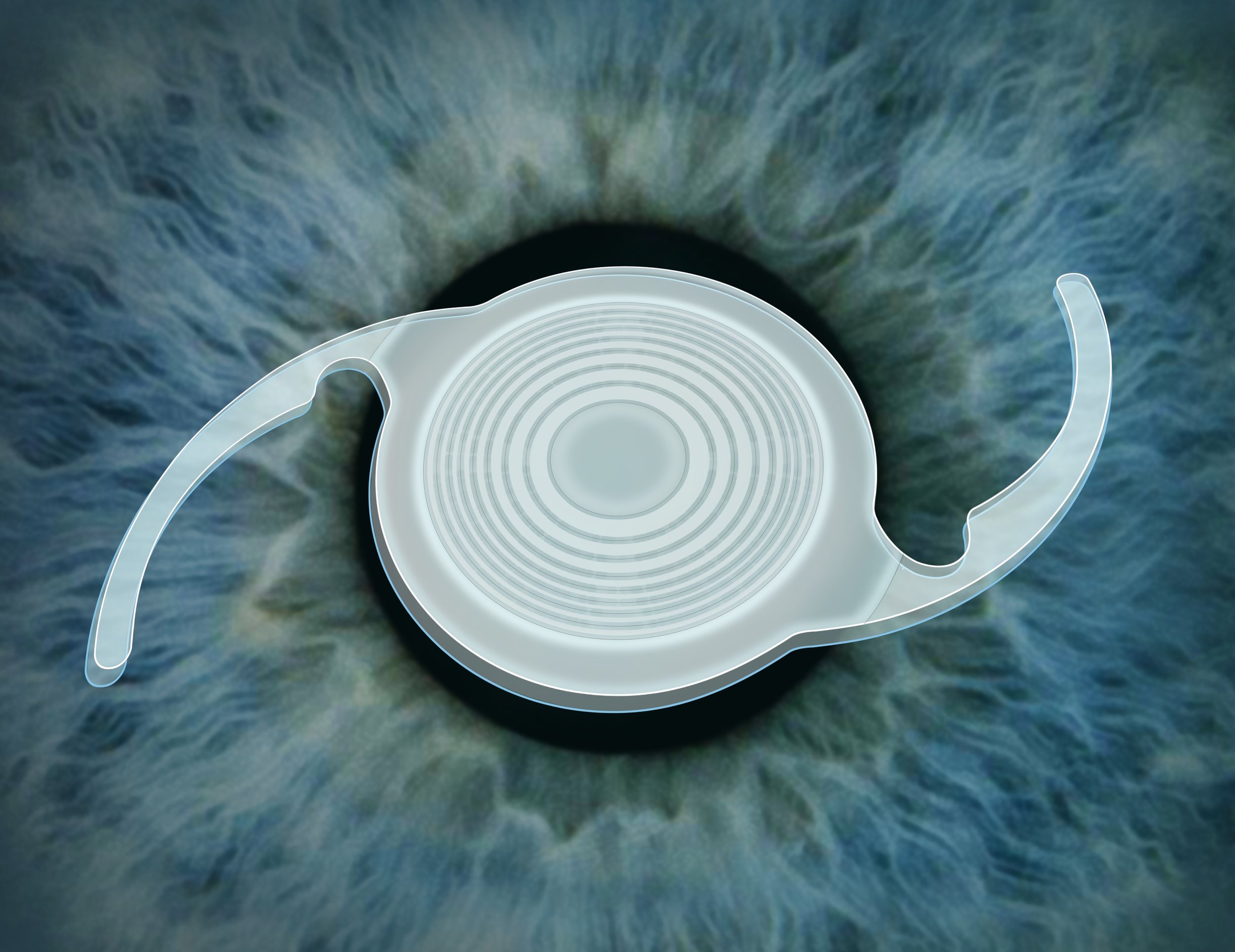
CATARACT LENS OPTIONS
When undergoing cataract surgery, patients are presented with various lens implant options, each designed to suit different vision needs and lifestyles. Our options include monofocal lenses, toric lenses for astigmatism correction, multifocal lenses for comprehensive vision correction, and the innovative light adjustable lenses. Understanding these choices helps in making an informed decision tailored to your vision requirements.
Monofocal Lenses: Often referred to as standard lenses, monofocal lenses provide clear vision at one focal point, either for distance or near tasks, but not both. While they don’t correct astigmatism, they offer simplicity and reliability. Many patients opt for monofocal lenses for distance vision and use glasses for near tasks. As the most commonly chosen option, monofocal lenses are fully covered by medical insurance and Medicare, acknowledging the necessity of cataract removal, despite the likelihood of needing glasses post-surgery.
Toric Lenses (Astigmatism-Correcting):Toric lenses are similar to monofocal lenses, except they can correct astigmatism as well. Typically, our toric lens patients have excellent distance vision and only need reading glasses for things about arm’s length away and closer.
Multifocal Lenses: As technology advances, multifocal lenses have become a go-to for patients seeking freedom from glasses across all distances—near, intermediate, and far. Though initial adjustment to multifocal lenses may include experiencing some glare and halos at night, these effects typically diminish as your brain adapts to the new visual system. Recent breakthroughs have significantly reduced such night vision disturbances, making multifocal lenses an even more attractive option for comprehensive vision correction.
Light Adjustable Lenses: The latest innovation in lens technology, light adjustable lenses, offer a customizable solution to vision correction. Unique in their ability to be fine-tuned after surgery, these lenses allow for adjustments to be made until the desired vision is achieved, addressing nearsightedness, farsightedness, astigmatism, and presbyopia with unprecedented precision. This adjustability ensures patients can achieve optimal vision outcomes tailored to their specific needs. However, this cutting-edge option involves a series of post-operative visits for adjustments and finalization, and it may represent an out-of-pocket investment, as it is not typically covered by insurance.
